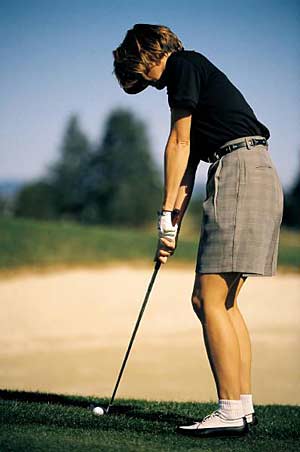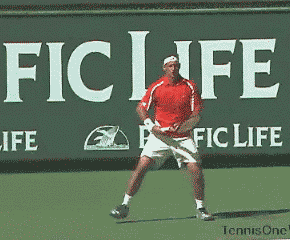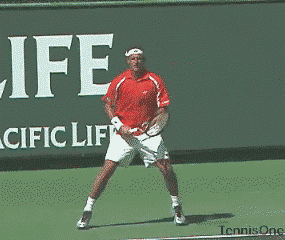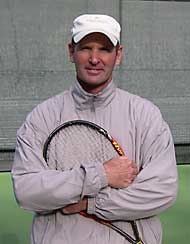|
TennisOne Lessons The Contact Zone Defined Doug King In my previous two articles I discussed in general terms the follow-through and the backswing aspects of the stroke. In this piece I would like to look at the Contact Zone. The Contact Zone is the heart of the stroke and at the heart of the Contact Zone is the point of contact – the moment when the ball and strings come together. Specifically defining the Contact Zone is somewhat difficult. If we consider the contact point as the middle of the Contact Zone then we could presume that a certain amount of stroke before and after the contact would be the Contact Zone. But where we make these delineations gets a little blurry. For example, when does the follow-through start and the Contact Zone end? You could argue that as soon as the ball leaves the strings then the follow-through starts. Typically, though, we still consider some of this part of the stroke as the “Contact Zone.” The same is true of the backswing. Does the Contact Zone start when the arm starts its forward swing? Not quite. As I mentioned in my last particle, even when the arm is moving forward there is still backswing (actually loading) occurring. So the Contact Zone actually includes aspects of both the backswing and the follow-through – and in a way, it includes the most important elements of these stroking parts. Most modern players appear to flick at the ball in quick cocking and releasing actions. In reality this action is a very controlled, well timed, and choreographed movement but it does have whip like qualities that make the Contact Zone a dynamic and diverse arena. It is usually when the Contact Zone becomes more of a uniform, forced, or controlled action that breakdowns occur.
Contact and Squaring to the Ball: "Fit Before You Hit” The most critical aspect of the stroke is the moment when the ball and the strings come together. Above all else there must be proper alignment between the racquet, the ball, and the target at the moment of contact. The ball should hit the sweet spot of the racquet and the face of the racquet should be aligned to both a desired target and a desired trajectory. For good results, the racquet face must be relatively square (perpendicular in plane to the ground) at contact. Think of how a golfer sets the club directly behind the ball as he sets up his stance before starting a swing. In the same way a tennis player must get the body properly aligned to the point of contact. In tennis this process is much more fluid and dynamic than golf since the ball is moving radically instead of being at rest on the ground but the correct configuration between the body and the point of contact is just as important. Another way to think about this alignment is to observe how competitive arm wrestlers spend so much time trying to get a good “grip” at the start of a wrestle. This grip is not only established in the grip of the hands but also in the way the body is situated to the hand and to the ground. It is through a good “fit” between these elements that proper power is achieved, power resulting from leverage and torque. Sometimes I like to advise my students to try and “fit” to the ball before they think about hitting it. “Fit before you hit” is a good formula to follow.
The longer you can stay in the reactive state of adjusting to the ball the more likely one will be to make a good catch of the ball. The longer you are able to delay the start of the forceful action of the stroke – the active part of the swing designed to power the ball – the longer you can stay in the reactive state. This defines a key to good stroking technique and that is the ability to create power in a very brief and compact moment of time and space. Your comments are welcome. Let us know what you think about Doug King's article by emailing us here at TennisOne.
Doug is one of the country's foremost tennis teaching innovators. Founder of Acceleration Tennis, a revolutionary teaching system, King is leading the way in reinterpreting the traditional tennis model. Doug King is currently Director of Tennis at Meadowood Napa Valley ( www.meadowood.com ), a Relaix Chateau Resort in St. Helena , CA . For more information on Acceleration Tennis please email Doug King at dking@meadowood.com. |




 Doug King studied with legendary tennis coach Tom Stow and was a
former California State Men's Singles Champion
and the former number one men's player of Northern California.
Doug King studied with legendary tennis coach Tom Stow and was a
former California State Men's Singles Champion
and the former number one men's player of Northern California.